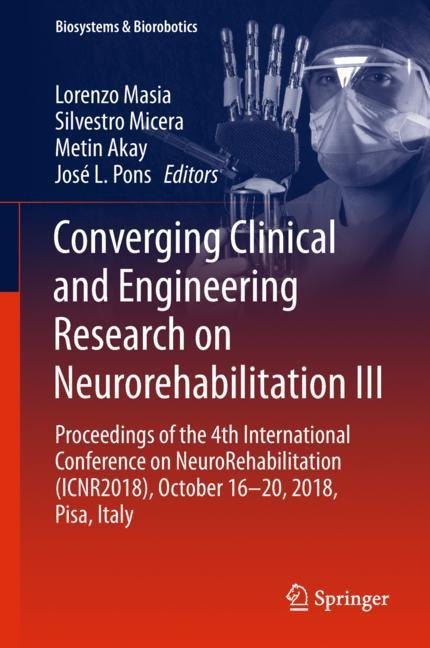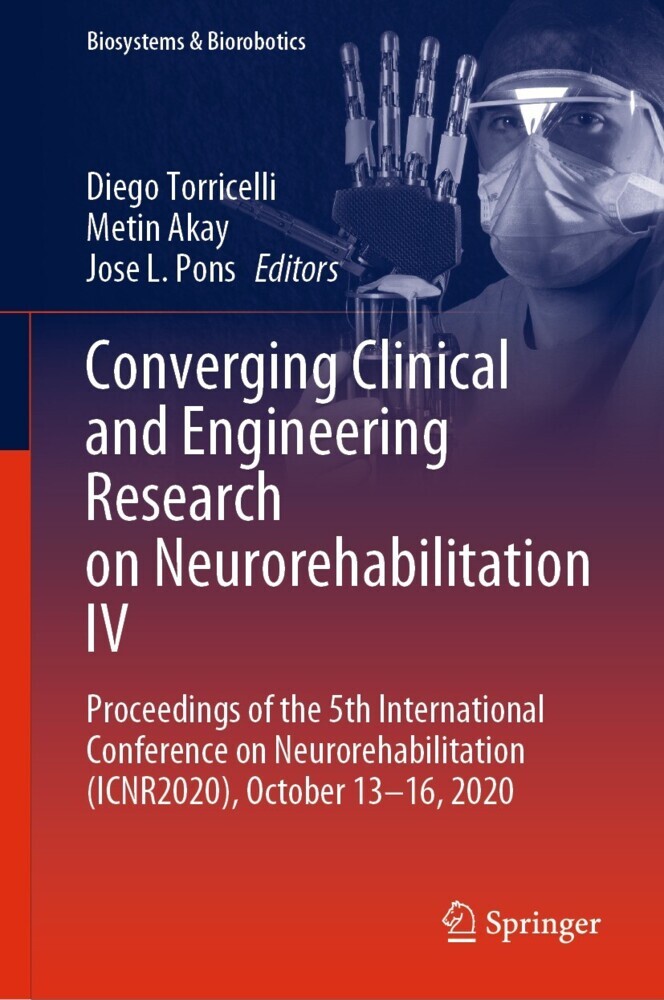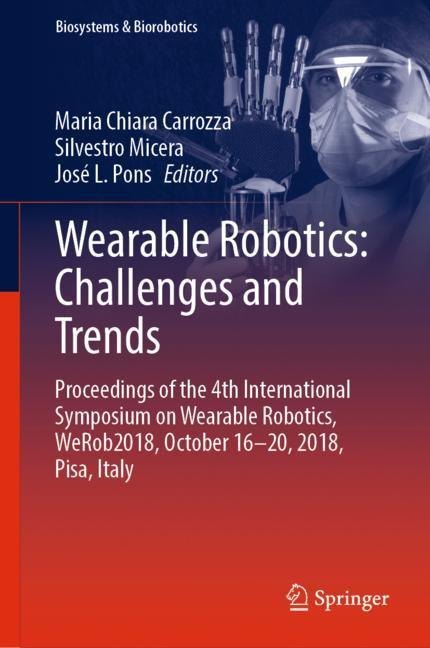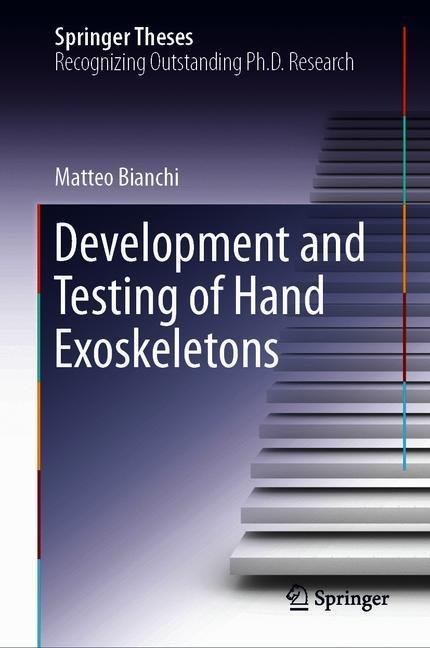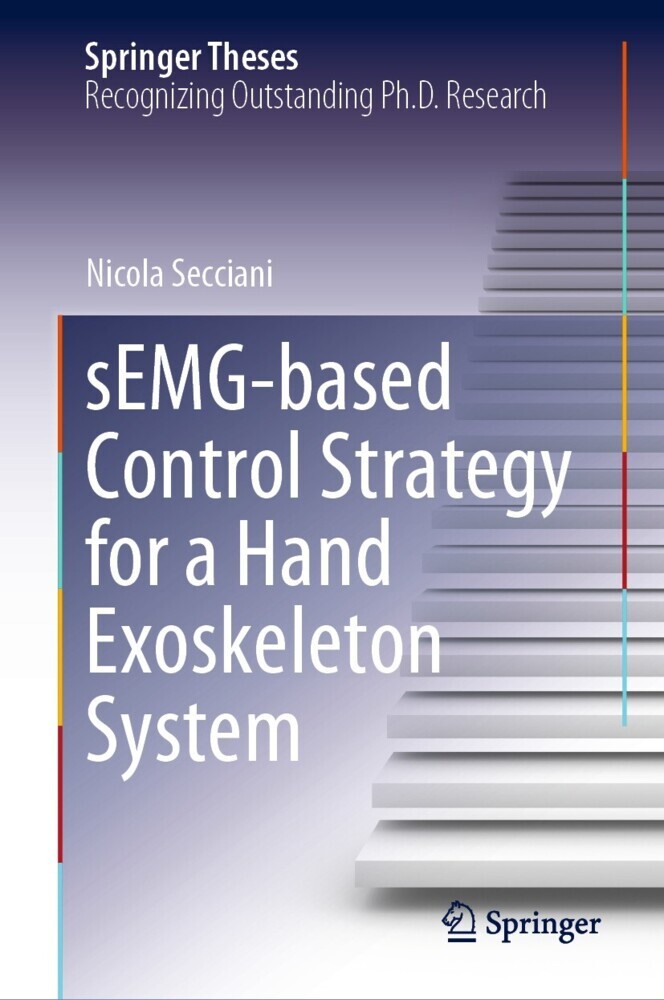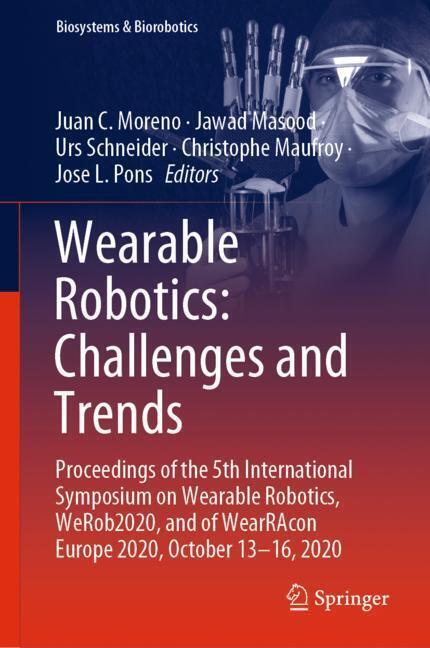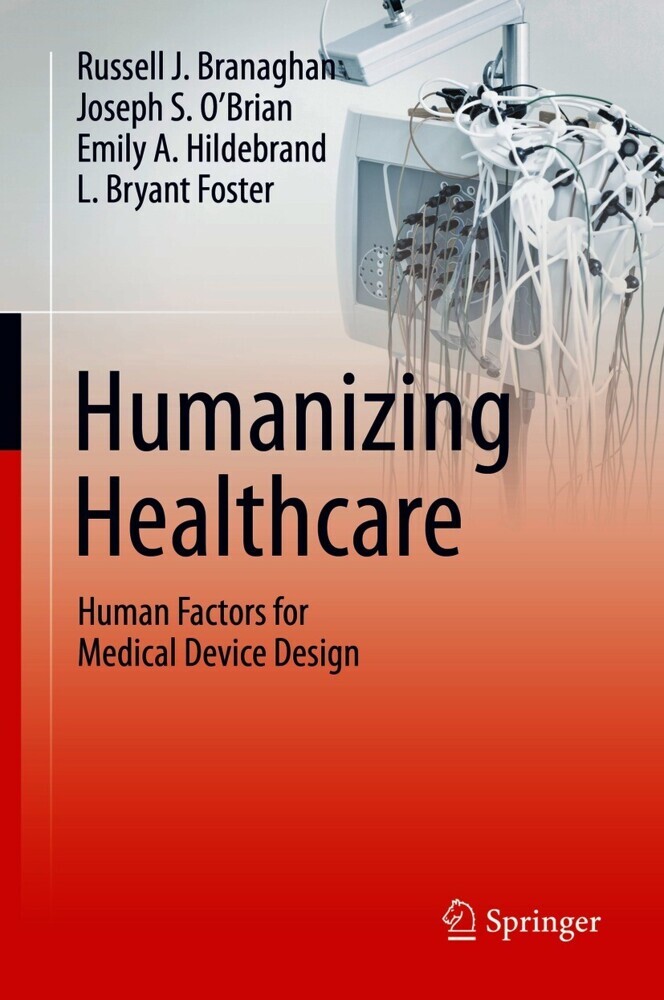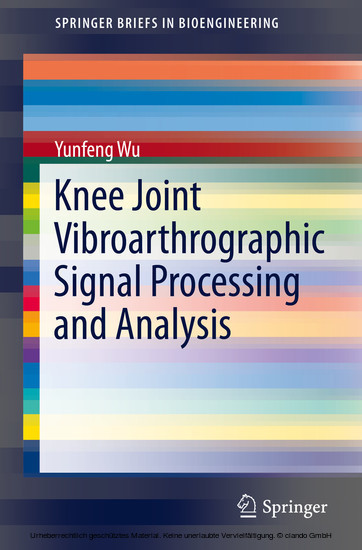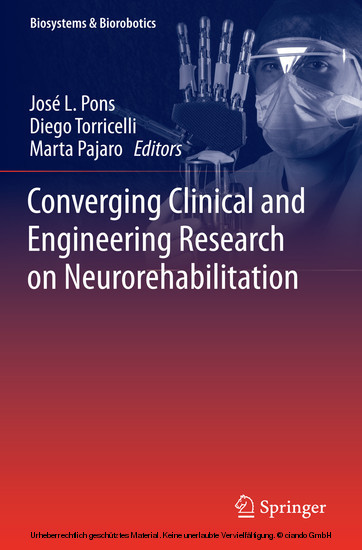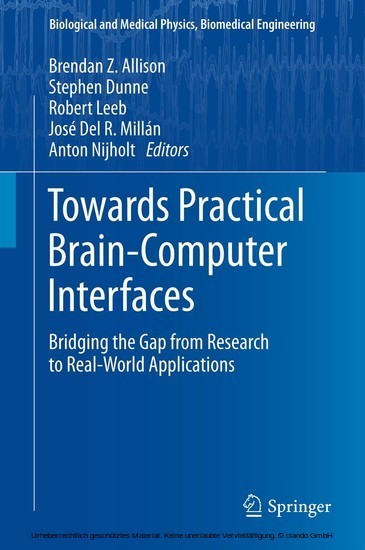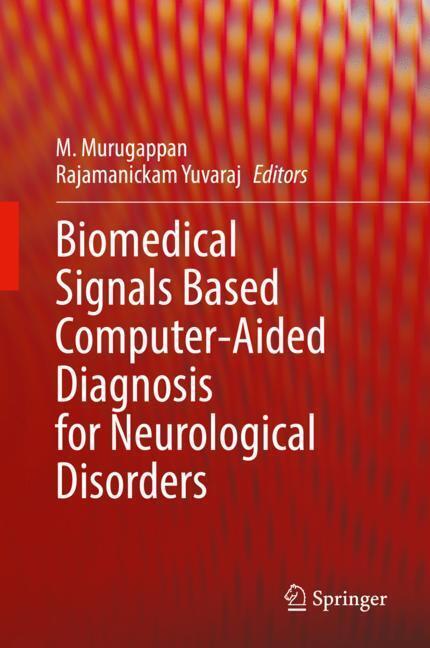Converging Clinical and Engineering Research on Neurorehabilitation III
Proceedings of the 4th International Conference on NeuroRehabilitation (ICNR2018), October 16-20, 2018, Pisa, Italy
Converging Clinical and Engineering Research on Neurorehabilitation III
Proceedings of the 4th International Conference on NeuroRehabilitation (ICNR2018), October 16-20, 2018, Pisa, Italy
The book reports on advanced topics in the areas of neurorehabilitation research and practice. It focuses on new methods for interfacing the human nervous system with electronic and mechatronic systems to restore or compensate impaired neural functions. Importantly, the book merges different perspectives, such as the clinical, neurophysiological, and bioengineering ones, to promote, feed and encourage collaborations between clinicians, neuroscientists and engineers. Based on the 2018 International Conference on Neurorehabilitation (ICNR 2018) held on October 16-20, 2018, in Pisa, Italy,, this book covers various aspects of neurorehabilitation research and practice, including new insights into biomechanics, brain physiology, neuroplasticity, and brain damages and diseases, as well as innovative methods and technologies for studying and/or recovering brain function, from data mining to interface technologies and neuroprosthetics. In this way, it offers a concise, yet comprehensive reference guide to neurosurgeons, rehabilitation physicians, neurologists, and bioengineers. Moreover, by highlighting current challenges in understanding brain diseases as well as in the available technologies and their implementation, the book is also expected to foster new collaborations between the different groups, thus stimulating new ideas and research directions.
1;Contents;6 2;Prosthetics - Translating Research Prototypes to Bedside: The Lesson-Learnt of the RETRAINER EU Project (SS2);31 3;A Wearable Hand Neuroprosthesis for Hand Rehabilitation After Stroke: Preliminary Results of the RETRAINER S2 Randomized Controlled Trial;32 3.1;Abstract;32 3.2;1 Introduction;32 3.3;2 Materials and Methods;33 3.3.1;2.1 Participants and Sample;33 3.3.2;2.2 System Description;34 3.3.3;2.3 Exercises Description;34 3.3.4;2.4 Description of Training Program;34 3.4;3 Results;35 3.5;4 Discussion;35 3.6;5 Conclusion;36 3.7;References;36 4;The Role of Industry in a H2020 Innovation Action - Transferring Research into Products;37 4.1;Abstract;37 4.2;1 Introduction;37 4.3;2 Main Advancements of the Project;38 4.3.1;2.1 Clinical Evidence;38 4.3.2;2.2 New Technology;38 4.3.3;2.3 Networking- LEAD Users;38 4.3.4;2.4 Distribution of Knowledge;38 4.3.5;2.5 Shared Production Resources;39 4.4;3 Challenges;39 4.4.1;3.1 Difficulties of Knowledge Transfer;39 4.4.2;3.2 Company Specific Challenges;39 4.4.3;3.3 Occupation Specific Language;39 4.4.4;3.4 Entering a Well-Established Consortium;40 4.4.5;3.5 Geographical Distance and Cultural Differences;40 4.5;4 Discussion and Conclusion;40 4.6;References;40 5;Smart Objects in Rehabilitation;41 5.1;Abstract;41 5.2;1 Introduction;41 5.3;2 Working Principle;42 5.3.1;2.1 Overview;42 5.3.2;2.2 System Components;42 5.4;3 Results;44 5.5;4 Conclusion;44 5.6;References;44 6;Wireless IMU- and EMG-Sensors for Controlled Functional Electrical Stimulation;45 6.1;1 Introduction;45 6.2;2 Methods;46 6.3;3 Preliminary Experimental Results;48 6.4;4 Conclusions;49 6.5;References;49 7;Passive Light-Weight Arm Exoskeleton: Possible Applications;50 7.1;Abstract;50 7.2;1 Introduction;50 7.3;2 Materials and Methods;51 7.3.1;2.1 Exoskeleton;51 7.3.2;2.2 Experimental Setup and Measurements;52 7.3.3;2.3 Simulation;52 7.4;3 Results and Discussions;53 7.5;4 Conclusion and Outlook;53 7.6;References;54 8;RETRAINER Project: Perspectives and Lesson Learnt on Clinical Trial in Rehabilitation Robotics to Foster Industrial Exploitation;55 8.1;Abstract;55 8.2;1 Introduction;55 8.3;2 What Does "Moving a Research Prototype Outside of the Lab" Mean?;56 8.4;3 What Are the Main Aspects of a Proper Clinical Trial of Rehabilitation Treatments Based on Robots?;57 8.5;4 What Are the Most Important Elements to Evaluate the Trial?;57 8.6;5 And the Industrial Exploitation?;58 8.7;References;59 9;Clinical Benefits and Acceptability of Two Commercial Arm Exoskeletons for Patients with Muscular Dystrophy;60 9.1;1 Introduction;60 9.2;2 Material and Methods;61 9.3;3 Result;62 9.4;4 Discussion;63 9.5;References;64 10;Prosthetics - Computer Models in the Design of Neurotechnologies and Rehabilitation Tools (SS3);65 11;Model-Based Analysis of Spinal Cord Stimulation for Chronic Pain;66 11.1;Abstract;66 11.2;1 Introduction;66 11.3;2 Materials and Methods;67 11.3.1;2.1 Clinical Measurements;67 11.3.2;2.2 Model Analysis;67 11.4;3 Results;69 11.5;4 Conclusion;69 11.6;Acknowledgments;69 11.7;References;69 12;Anatomically Realistic Computational Model to Assess the Specificity of Epidural Electrical Stimulation of the Cervical Spinal Cord;71 12.1;1 Introduction;71 12.2;2 Hybrid Computational Model;72 12.2.1;2.1 Realistic 3D Conductor Volume;72 12.2.2;2.2 Realistic Group-Ia Fibers;72 12.3;3 Results;73 12.4;4 Conclusion;74 12.5;References;74 13;A Computational Model for the Design of Lower-Limb Sensorimotor Neuroprostheses;76 13.1;Abstract;76 13.2;1 Introduction;76 13.3;2 Materials and Methods;77 13.3.1;2.1 Computational Model;77 13.3.2;2.2 Modeling of Different Geometry and Design of Devices;77 13.4;3 Results;78 13.5;4 Discussion and Conclusion;79 13.6;References;80 14;Decoding Phantom Limb Neuro-Mechanical Function for a New Paradigm of Mind-Controlled Bionic Limbs;81 14.1;Abstract;81 14.2;1 Introduction;81 14.3;2 Methods;82 14.3.1;2.1 Experimental Procedures;82 14.3.2;2.2 Neuro-Mechanical Modelling and Control;82 14.4;3 Results;83 14.5;
Masia, Lorenzo
Micera, Silvestro
Akay, Metin
Pons, José L.
| ISBN | 9783030018450 |
|---|---|
| Artikelnummer | 9783030018450 |
| Medientyp | E-Book - PDF |
| Copyrightjahr | 2018 |
| Verlag | Springer-Verlag |
| Umfang | 1171 Seiten |
| Sprache | Englisch |
| Kopierschutz | Digitales Wasserzeichen |

